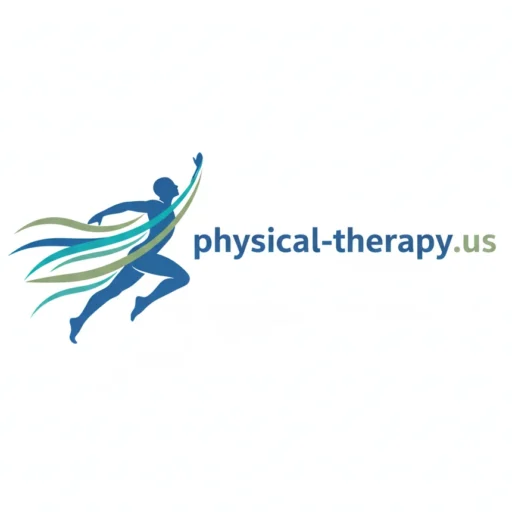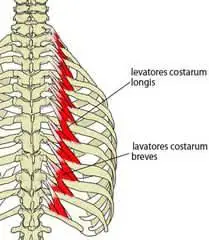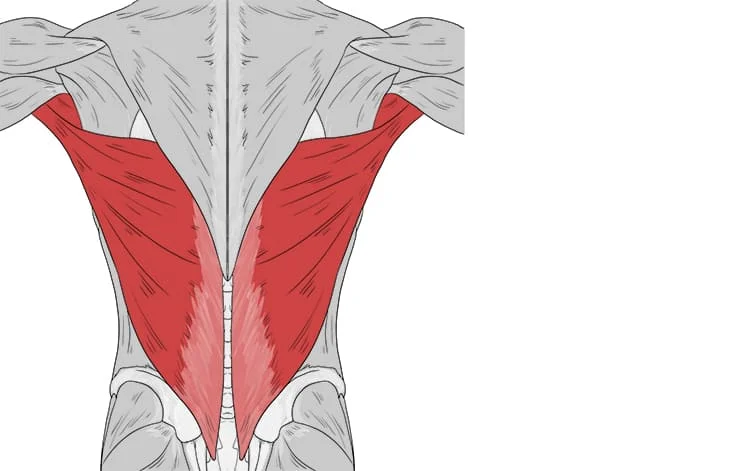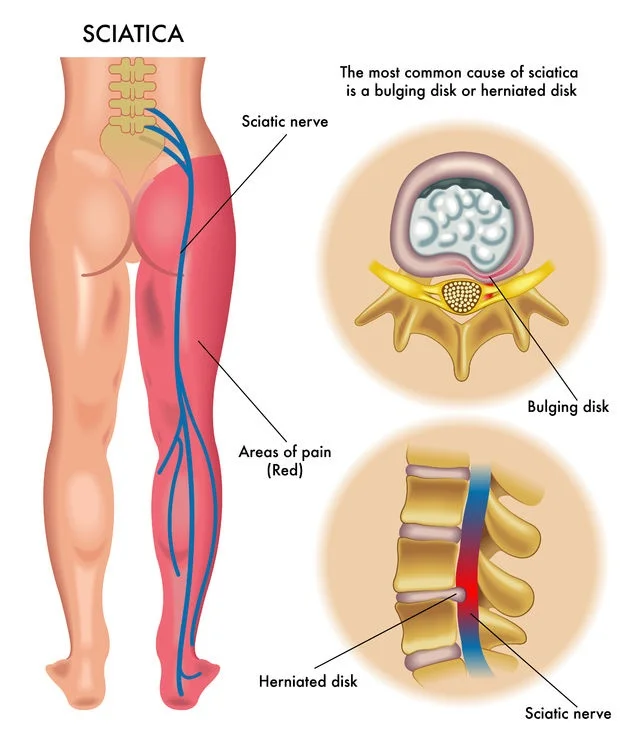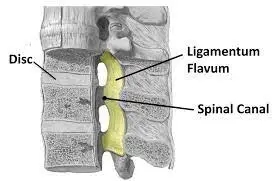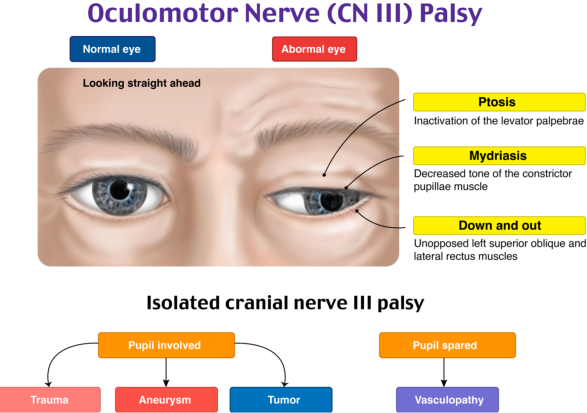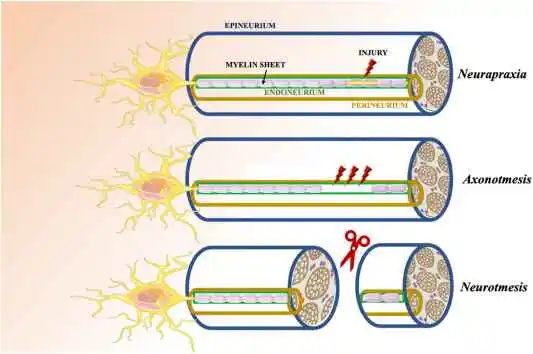Levatores Costarum Muscles
Introduction
The Levatores Costarum (Latin for “lifters of the ribs”) are small, deep muscles of the back that assist with breathing and spinal movement.
Twelve tiny triangle muscles make up the levatores costarum, which connect the thoracic vertebrae to the nearby ribs. They extend from C7 to T12 levels in the thoracic area and are situated on each side of the posterior part of the thoracic vertebra. They descend next to the spine.
They make up the intrinsic muscles of the chest wall, together with the intercostal muscles, transversus thoracis, and serratus posterior superior and inferior. It is believed that the intrinsic muscles of the chest wall contribute to forced breathing and to the paradoxical breathing that occurs when the chest moves inward during inspiration.
The levatores costarum muscles are categorised as chest wall muscles, although they can also be classed with the deepest back muscles, which include the interspinales and intertransversarii muscles. The fourth layer of the deep back muscles is made up of these smaller muscles. In addition to raising the ribs, the levatores costarum causes the thoracic vertebrae to rotate and flex laterally.
Structure
Origin
Transverse processes of C7 to T11 vertebrae.
Insertion
Insertion: The rib immediately below (or two ribs below, in some cases)
- Levatores Costarum Breves: Insert on the rib one level below
- Levatores Costarum Longi (longer version, only from T8–T11): Insert on the rib two levels below
More specifically, the muscle bundle begins at the peak of the corresponding vertebra’s transverse processes (C7-T11). It then inserts into the external face of the superior border of the rib by moving obliquely in an inferolateral manner between the costal angle and the rib tubercle. The muscles are triangular in form, with the apex pointing towards the origin and the base towards the insertion.
The upper eight muscles (on each side) move as separate bands of muscle from origin to insertion. Conversely, the levatores costarum breves and levatores costarum longi are the two fasciculi into which the bottom four muscles split. The shorter (breve) fascicle goes from the muscles’ origin to attach to the rib directly below, while the longer (longi) fascicle descends farther to hook onto the rib two levels below.
Blood supply
The levatores costarum muscles get oxygenated blood from the dorsal branch of the posterior intercostal artery. A direct branch of the thoracic aorta, the posterior intercostal artery runs down the underside of each rib.
Nerve Supply
The dorsal rami (intercostal nerves) C8-T11.
The levatores costarum is innervated by the lateral branches of the spinal nerves’ posterior rami (C8–T11).
Functions
Levatores costarum serves two main purposes. The ribs should be raised first, and then the vertebra should be rotated and laterally flexed. The levatores costarum can raise the ribs, but whether or not it actively participates in inspiration is up for debate.
Relations
The levatores costarum is medial to the external intercostal muscles and lateral to the rotatores thoracis muscle group. Additionally, it is situated deep to the thoracis and semispinalis cervicis muscles.
Innervation
The lateral branches of the posterior rami of spinal nerves (C8–T11) innervate the levatores costarum.
Clinical Importance
The transversus thoracis muscle, serratus posterior superior and inferior, and the other intercostal muscles form the intrinsic muscles of the chest wall. In addition to cooperating during forced respiration, these group muscles could also aid in avoiding paradoxical breathing.
Together with the interspinales and intertransversarii muscles, which make up the fourth layer, these muscles are the deepest in the back.
Levatores costarum muscles pain
Levatores costarum muscle pain typically presents as localized discomfort in the upper or mid-back, often near the spine or between the shoulder blades. This pain can be sharp or aching and may worsen with deep breathing, rotation, or side bending of the torso. It often results from poor posture, overuse, or muscle strain, and is sometimes mistaken for rib or thoracic spine issues.
Treatment
Stretching Exercises
Seated Side Stretch
- Sit on a chair or cross-legged.
- Lean to the other side and lift one arm above your head.
- Repeat two to three times on each side, holding for 20 to 30 seconds.
Cat-Cow Stretch
- Begin on your hands and knees on a tabletop.
- Take a breath and raise your chest and tailbone by arching your back (Cow Pose).
- Exhale: Pull your ribs inward, tuck your chin in, and round your spine (Cat Pose).
- To increase spinal mobility, repeat ten to fifteen times.
Standing Thoracic Extension Stretch
- With your hands crossed behind your head, take a proud stance.
- Gaze slightly upward and gently arch your upper back.
- Hold for 15 to 20 seconds, and then do it two or three times.
Strengthening Exercises
Resistance Band Rows
- A resistance band should be anchored at chest height.
- Keeping your elbows close to your body, pull the band in your direction.
- To strengthen your ribs and upper back, complete three sets of 12–15 repetitions.
Thoracic Rotation with Resistance Band
- Anchor a resistance band at one side while holding it with both hands.
- Engage your back and ribs as you rotate your torso away from the anchor point.
- Do 10–12 repetitions per side in 3 sets.
Superman Exercise
- With your arms extended in front of you, lie face down.
- Using your back muscles, raise your legs and chest a little off the ground.
- Repeat 10–12 times, holding for 5–10 seconds each time.
FAQs
What does Costarum mean?
General information. The 12 little triangle muscles that link the thoracic vertebrae to their neighbouring ribs are known as the levatores costarum. These muscles are located on the posterior thoracic vertebra from C7 to T12, spanning the whole thoracic region.
What are the attachments of the levator costarum?
Immediately below, between the tubercle and angle of the ribs 1–3, each fan-shaped levator costarum muscle connects to the superior border of the rib by passing inferolaterally from the tip of a transverse process of the C7 to T11 vertebrae. In comparison to the external intercostal muscles, they are superficial.
What is the levator’s origin insertion action?
The back’s extrinsic muscle is the levator scapulae. It connects the upper limb to the spinal column and is located in the neck’s posterior triangle. Attachments: Connects to the medial margin of the scapula after emerging from the transverse processes of the C1–C4 vertebrae. Actions: Scapular elevation.
What is levatores costarum?
The deep back muscles are called levatores costarum. They may also be regarded as a deep chest wall muscle group and are made up of 12 tiny paired muscles. Attachments originate from the transverse processes of C7-T11 and attach to the rib below. Actions: Elevates the ribs during respiration.
What nerve is the levator?
The nerve to the levator ani is a part of the pudendal plexus, originating from the fourth sacral spinal nerve. Additionally, these muscles receive fibres from the coccygeus plexus, a branch of the pudendal nerve, and the inferior rectal nerve. The muscles are not innervated on either side.
References
- Levatores costarum muscles. (2023, October 26). Kenhub. https://www.kenhub.com/en/library/anatomy/levatores-costarum-muscles
- Wikipedia contributors. (2024c, May 6). Levatores costarum muscles. Wikipedia. https://en.wikipedia.org/wiki/Levatores_costarum_muscles
- Vastralphysiotherapyclinic. (2023c, December 10). Levatores costarum muscles: anatomy, origin, insertion, function. Mobility Physiotherapy Clinic. https://mobilephysiotherapyclinic.net/levatores-costarum-muscles/
